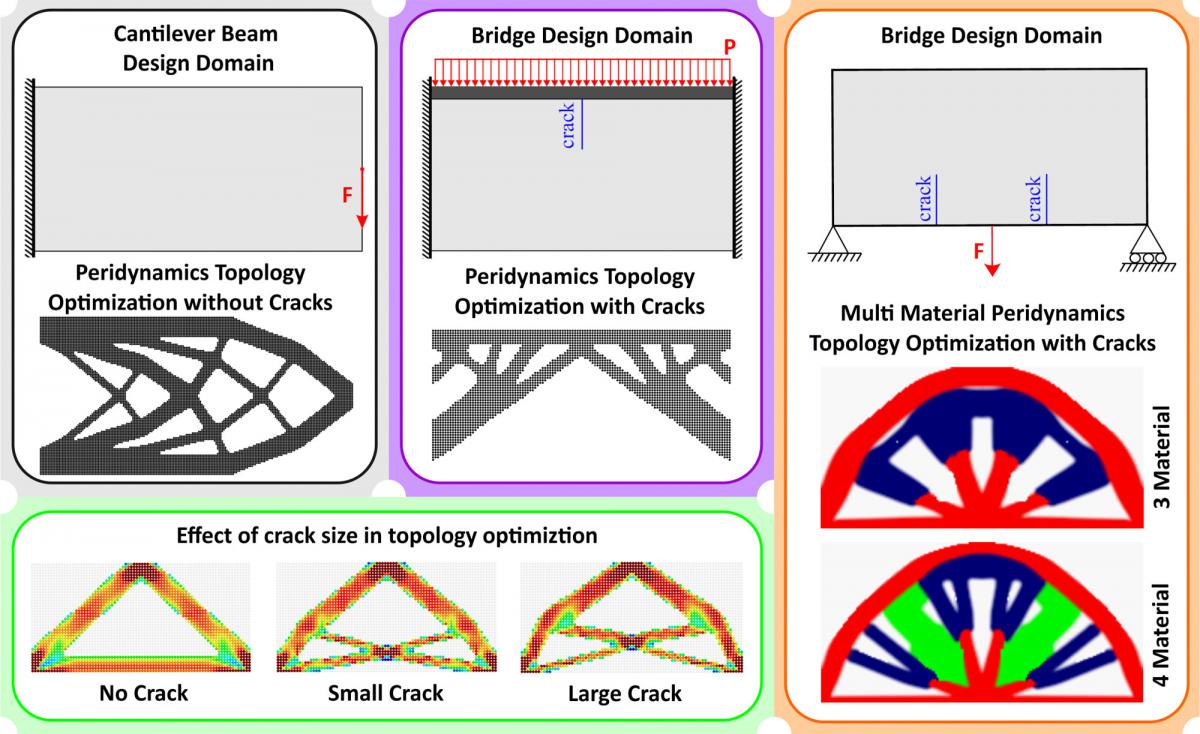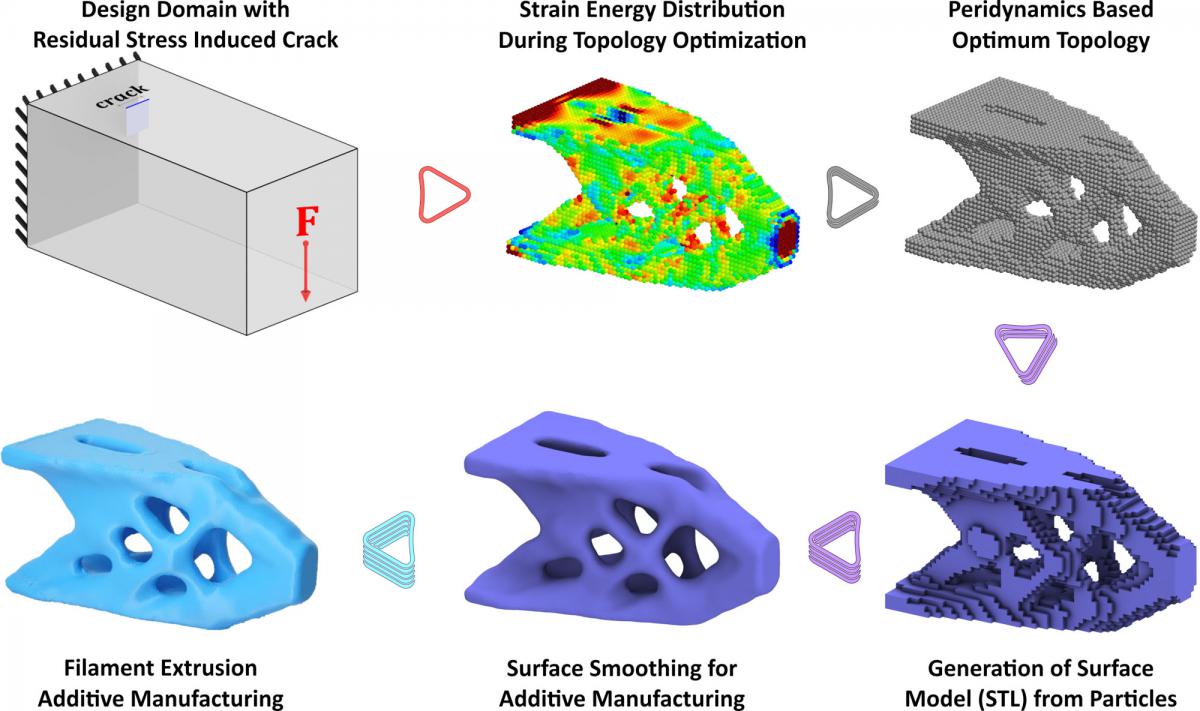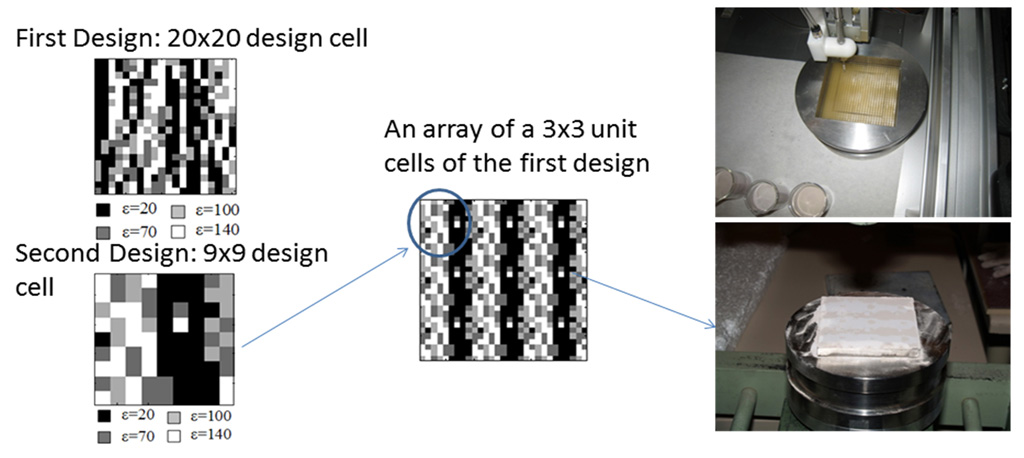Peridynamics (PD) is a new nonlocal continuum mechanics formulation. Its equations are always applicable whether there is any discontinuity in the structure or not due to the non-derivative (i.e., purely integral) nature of the theory. On the other hand, topology optimization can be considered as finding an optimal distribution of material deposition (i.e., where should the material be?) whilst improving an objective function (e.g., stiffness) and satisfying design constraints.
We recently developed a novel peridynamics topology optimization (PD-TO) algorithm to perform structural optimization of engineering components involving damages/cracks/failures. As depicted in Figure 1, this new concept allows engineers to model existence of damage as a constraint during geometrical optimization process. In addition, the PD-TO approach simply eliminate the limitations encountered when performing the topology optimization analysis using traditional finite element methods especially for problems involving moving boundaries, large deformations, and cracks/defects.
 Figure 1. Optimum topologies obtained from PD analysis.
Figure 1. Optimum topologies obtained from PD analysis.
Moreover, various three-dimensional topology optimization algorithms have been developed for additive manufacturing of structures. During topology optimization stages, the mechanical/manufacturing constraints including minimum feature size, overhang supports angle, selective print directions are considered for rapid prototyping of an optimized geometry. The fundamental solution methods contain comprehensive combination of different modelling techniques such as PD, finite element methods, other continuum formulations. Hence, vital mechanical parameters including residual stress, stress-induced cracks, thermomechanical damages can be viably considered during topology optimization. Various geometry smoothing methods are implemented on the geometry being optimized, thereby producing ready-to-print structures (i.e., with/without consideration of cracks) as shown in Figure 2.
 Figure 2. Peridynamics topology optimization: Towards print-ready design for additive manufacturing.
Figure 2. Peridynamics topology optimization: Towards print-ready design for additive manufacturing.




 Figure: Optimal designed and fabricated anisotropic electromagnetic material with off the shelf dielectric constituents
Figure: Optimal designed and fabricated anisotropic electromagnetic material with off the shelf dielectric constituents
 Figure: Fabricated deformable polymer-ceramic functionally graded substrates using tape casting (left) and freeze drying (right)
Figure: Fabricated deformable polymer-ceramic functionally graded substrates using tape casting (left) and freeze drying (right)
 Figure 1. Optimum topologies obtained from PD analysis.
Figure 1. Optimum topologies obtained from PD analysis. Figure 2. Peridynamics topology optimization: Towards print-ready design for additive manufacturing.
Figure 2. Peridynamics topology optimization: Towards print-ready design for additive manufacturing.